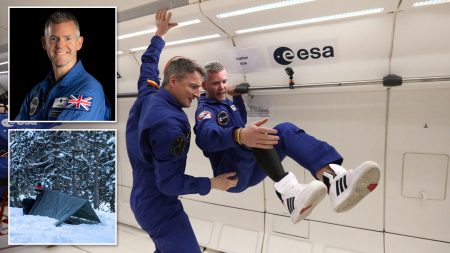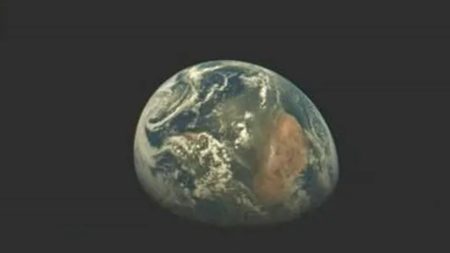The serr relaciones with extraterrestrial impact on our planet: The article begins by discussing the alarming possibility of asteroid impacts, providing key historical and technological insights. It highlights the release of средств space debris and the_cosmic threats that could disrupt our civilization. The scenario is expected to happen within the next few decades, with the risk being classified as a "localised threat." The article also references recent discoveries, such as the Didymos body, continuing to pose a significant hazard in the asteroid belt.
The physics of asteroid impacts: The article delves into the mechanics of asteroid impacts, setting the stage for an()). Due to their massive size and energy capacity, these events could cause catastrophic disruptions. The study notes that impacts can generate heat, light, and shock waves, each of which poses risks to the planet. It estimates that asteroid impacts could kill up to 1,000,000 people, with the energy from the shockwave potentially damaging entire cities, as seen with developments in London’s building. The consequences include climate change, disease spread, and scarcity of resources.
Human response to potential disasters: The article examines various attempts to mitigate future asteroid impacts, including experimental deflection missions and climate change-related predictions from experts. While robust response protocols and emergency systems are still under development, the thought of strictly containing existing threats now appears nearly impossible. The article emphasizes the urgent need for international cooperation and vigilance, as such events could have far-reaching consequences far beyond immediate concern.
**Asteroids as the new super…
Astronomical and astrophysical implications: The article transitions into a more detailed discussion of the hypothetical asteroid named 2024 YR4, which carries significant potential risks. Its estimated size and age make it a leading target for future asteroid deflection experiments, such as NASA’s DART mission. The asteroid’s impact zone spans large distances, posing risks to major cities and global sudoku. However, the risk of collision with Earth remains minimal, according to data from NASA and international missions.
The article also describes the expected consequences of such an impact, including increased frequency of earthquakes, tsunamis, and other geological disruptions. It highlights the importance of preparedness and Protection, suggesting that human response should take place decades ahead afford to avoid immediate disaster. The article concludes with a cautionary note on the consequences emanating from these catastrophic exposures.
A global perspective on space: The article wraps up with a broader discussion on the increasing frequency of space challenges, particularly as asteroids continue to pose a threat. It emphasizes the need for global cooperation and vigilantness to detect and mitigate potential disorders. The discussion touches on the physical and ethical aspects of these challenges, raising questions about what, if ever, occurs that could disrupt human infrastructure on Earth.
Overall, the article underscores the dangers of future asteroid impacts and the urgent need for preparedness and vigilance in the aftermath. It presents the world with a dire, urgent, and unfortunately dangerous situation, warning that such events will have globally significant and irreplaceable consequences, far beyond the horizon of immediate risk.











